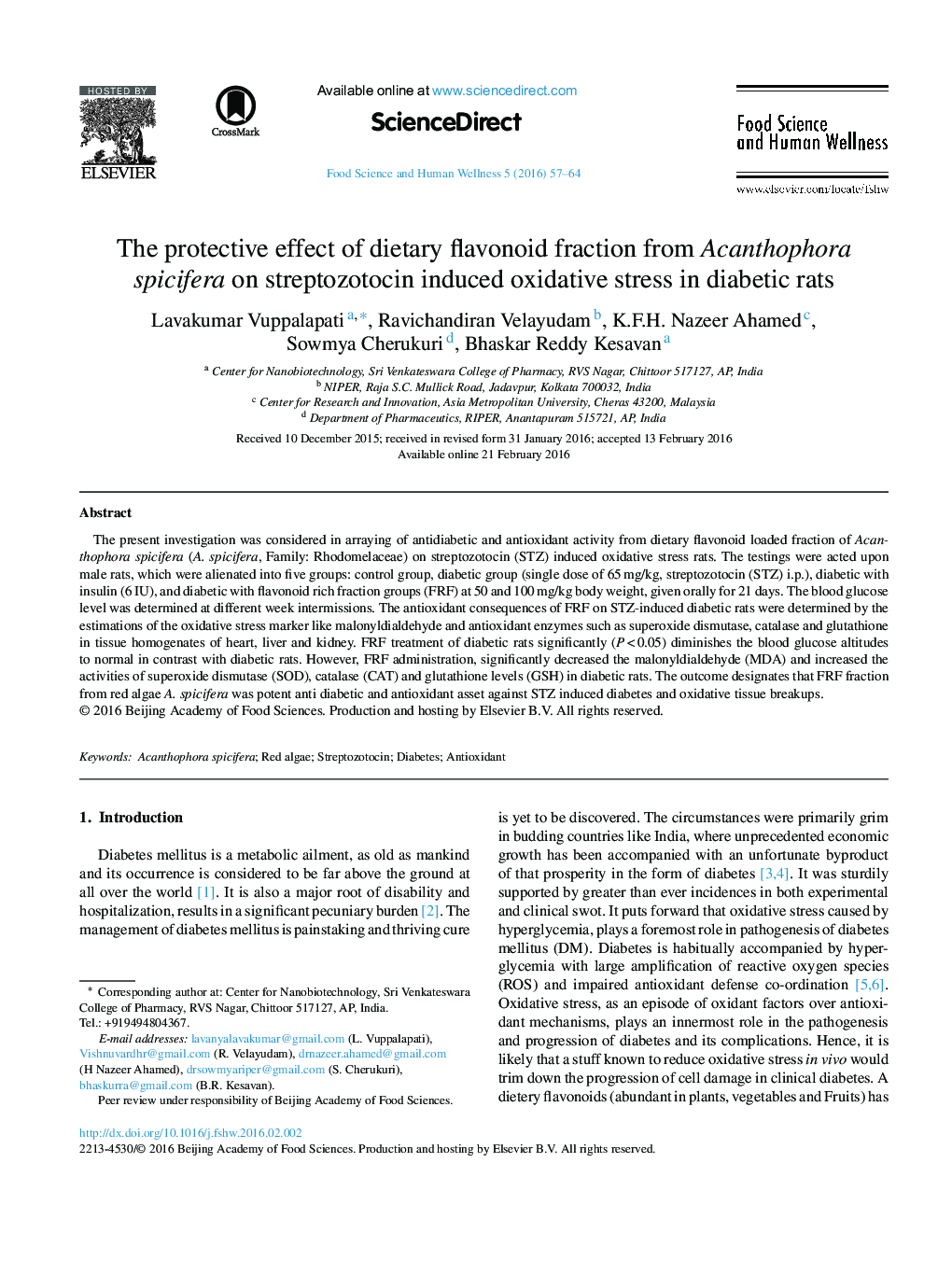| کد مقاله | کد نشریه | سال انتشار | مقاله انگلیسی | نسخه تمام متن |
|---|---|---|---|---|
| 2691379 | 1143347 | 2016 | 8 صفحه PDF | دانلود رایگان |
The present investigation was considered in arraying of antidiabetic and antioxidant activity from dietary flavonoid loaded fraction of Acanthophora spicifera (A. spicifera, Family: Rhodomelaceae) on streptozotocin (STZ) induced oxidative stress rats. The testings were acted upon male rats, which were alienated into five groups: control group, diabetic group (single dose of 65 mg/kg, streptozotocin (STZ) i.p.), diabetic with insulin (6 IU), and diabetic with flavonoid rich fraction groups (FRF) at 50 and 100 mg/kg body weight, given orally for 21 days. The blood glucose level was determined at different week intermissions. The antioxidant consequences of FRF on STZ-induced diabetic rats were determined by the estimations of the oxidative stress marker like malonyldialdehyde and antioxidant enzymes such as superoxide dismutase, catalase and glutathione in tissue homogenates of heart, liver and kidney. FRF treatment of diabetic rats significantly (P < 0.05) diminishes the blood glucose altitudes to normal in contrast with diabetic rats. However, FRF administration, significantly decreased the malonyldialdehyde (MDA) and increased the activities of superoxide dismutase (SOD), catalase (CAT) and glutathione levels (GSH) in diabetic rats. The outcome designates that FRF fraction from red algae A. spicifera was potent anti diabetic and antioxidant asset against STZ induced diabetes and oxidative tissue breakups.
Journal: Food Science and Human Wellness - Volume 5, Issue 2, June 2016, Pages 57–64
